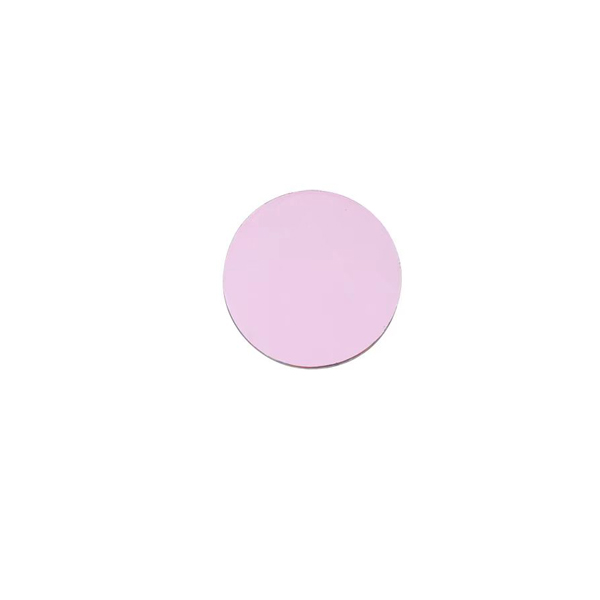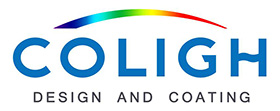

720.5/29nm Narrowband Bandpass Filter
720.5/29nm Narrowband Bandpass Filter is designed to transmit light centered 720.5nm and FWHM 29nm. Coligh manufactures hardcoated EUV to IR bandpass filter
It has features below:
- Center wavelength 720.5nm
- FWHM 29nm
- Transmission above 90%
- Blocking depth OD>=6
- ION Assisted Hard Coating
- Custom highly welcomed
Products Categories
Get A Free Quote
Hard-Coated 720.5/29nm Bandpass Interference Filter Description
720.5/29nm Narrowband Bandpass Filter Coligh manufactures is designed for precise selection of 720.5 nm near-infrared band optical signals. It is a high-performance optical filter based on the principle of multilayer dielectric film interference.
- The central wavelength is 720.5+/-1nm, covering the biological tissue transmission window of 700-900nm and some near-infrared fluorescence/Raman spectral characteristic peaks.
- The half-bandwidth is 29+/-1nm, and the passband range is 706–735 nm, which effectively suppresses interference from adjacent bands and strictly suppresses out-of-band ultraviolet, visible light and near-infrared stray light (such as excitation light source and ambient light).
- The transmittance in the passband is greater than or equal to 90%, maximizing the signal acquisition efficiency.
- Blocking range covers 350–1100 nm, cut-off depth above OD6
- This filter is a hard-coated interference filter, which achieves narrow-band high transmission and deep blocking performance through the precise stacking of dozens of layers of high/low refractive index oxide films
- We use a high-resolution spectrometer to test transmittance, bandwidth and blocking depth to ensure that each filter meets the specifications and has strict consistency between batches
720.5/29nm Narrowband Bandpass Filter Techncial Datasheet
| Parameter | Specification |
| Center Wavelength (CWL) | 720.5nm ± 1 nm |
| Full Width at Half Maximum (FWHM) | 29nm± 1 nm |
| Peak Transmission | 90% |
| Blocking Range | 350-1000nm |
| Optical Density (OD) | OD ≥ 6 outside passband |
| Angle of Incidence (AOI) | 0° +/-5° |
| Surface Quality | 60/40 scratch-dig (per MIL-PRF-13830B) |
| Material Substrate | Fused Silica JGS1 |
| Coating Type | Hard-Coated Interference Filter/ IAD Assisted Coating |
| Thickness | 1mm (typical) |
| Filter Dimensions | Custom sizes available (e.g., Ø12.5 mm, 60×60 mm) |
| Clear Aperture | >90% of physical size |
| Operating Temperature | -40°C to +85°C |
720.5/29nm Narrowband Bandpass Filter Applications
- In vivo near-infrared fluorescence imaging
In vivo imaging requires the detection of the emission signals of near-infrared fluorescent probes IRDye 800CW and Cy7 at 710-730nm, but the spontaneous fluorescence and background noise of biological tissues will interfere with weak signals. The 720.5/29nm narrowband filter can be placed at the front end of the detector of the imaging system, and with a 720 nm laser excitation light source, it only receives fluorescence signals in the range of 706–735 nm. The 29 nm narrowband light window matches the probe emission peak, suppressing spontaneous fluorescence below 700 nm and ambient light above 750 nm. - Photovoltaic film defect detection
The reflectivity of microcracks and impurities in photovoltaic films varies significantly near 720 nm, and high-contrast imaging is required to locate defects, but workshop lighting and infrared thermal radiation will reduce the signal-to-noise ratio. The 720.5/29nm optical filter can be integrated into the optical module of the industrial camera, and with a 720 nm LED light source, it only receives 720.5±14.5 nm reflection signals. Block visible light and far-infrared light to highlight the reflection characteristics of the defective area. - Autonomous driving environment perception
The autonomous driving LiDAR system uses 720 nm laser to detect obstacles, but interference from sunlight, especially the near-infrared band, will cause point cloud noise and reduce target recognition accuracy. This filter can cover the LiDAR receiving sensor and only allow 720.5±14.5 nm laser echo signals to pass through. Block the bands other than 700–740 nm in sunlight to improve the signal-to-noise ratio - Surface Enhanced Raman Spectroscopy
In SERS detection, the intensity of the Raman signal at 720 nm is extremely weak, and the Rayleigh scattering and fluorescence background of the excitation light 785 nm laser need to be filtered out. This filter can be used as a supplement to the edge filter and placed in the collection light path of the Raman spectrometer to isolate the 706–735 nm target signal.




